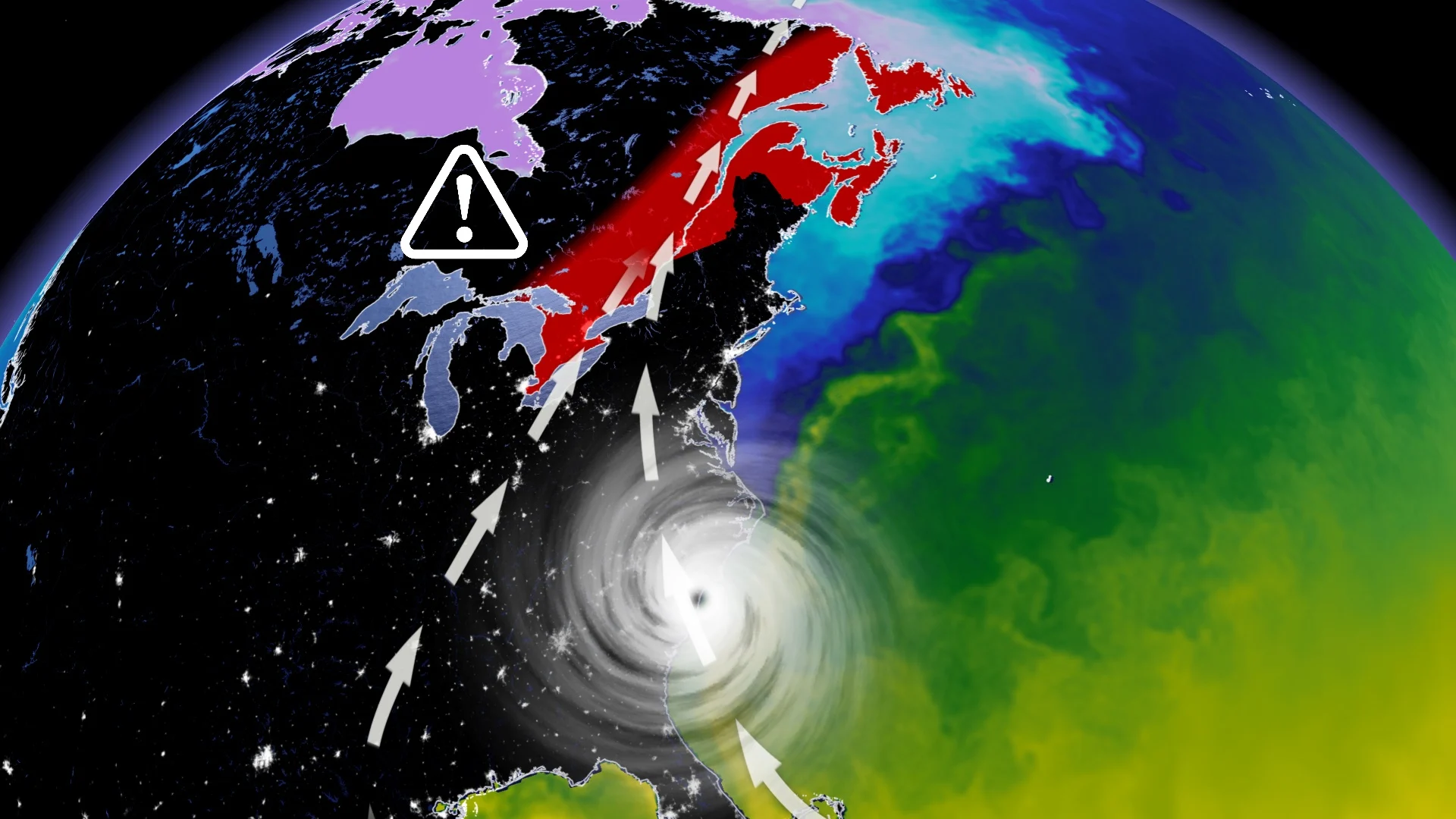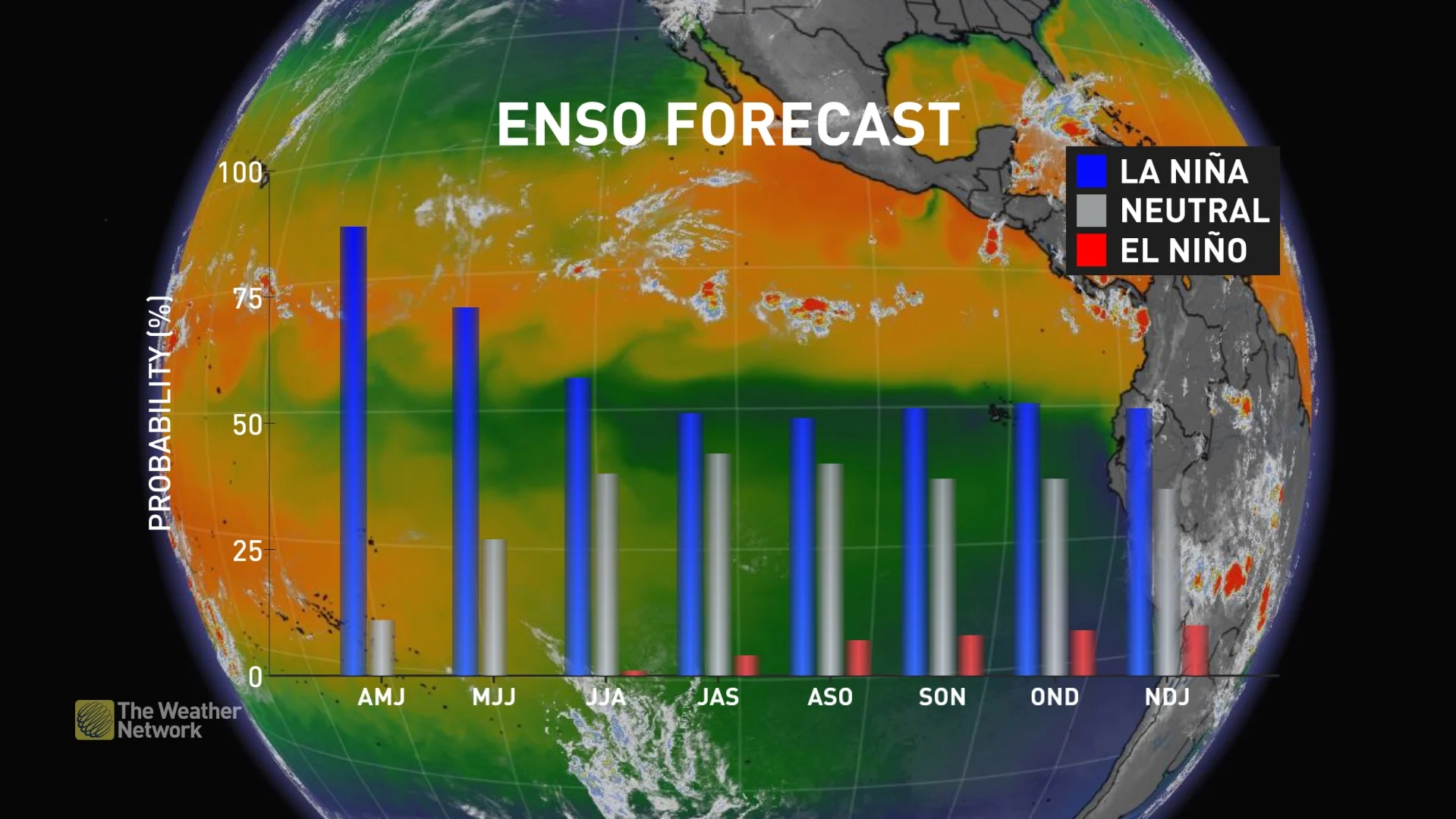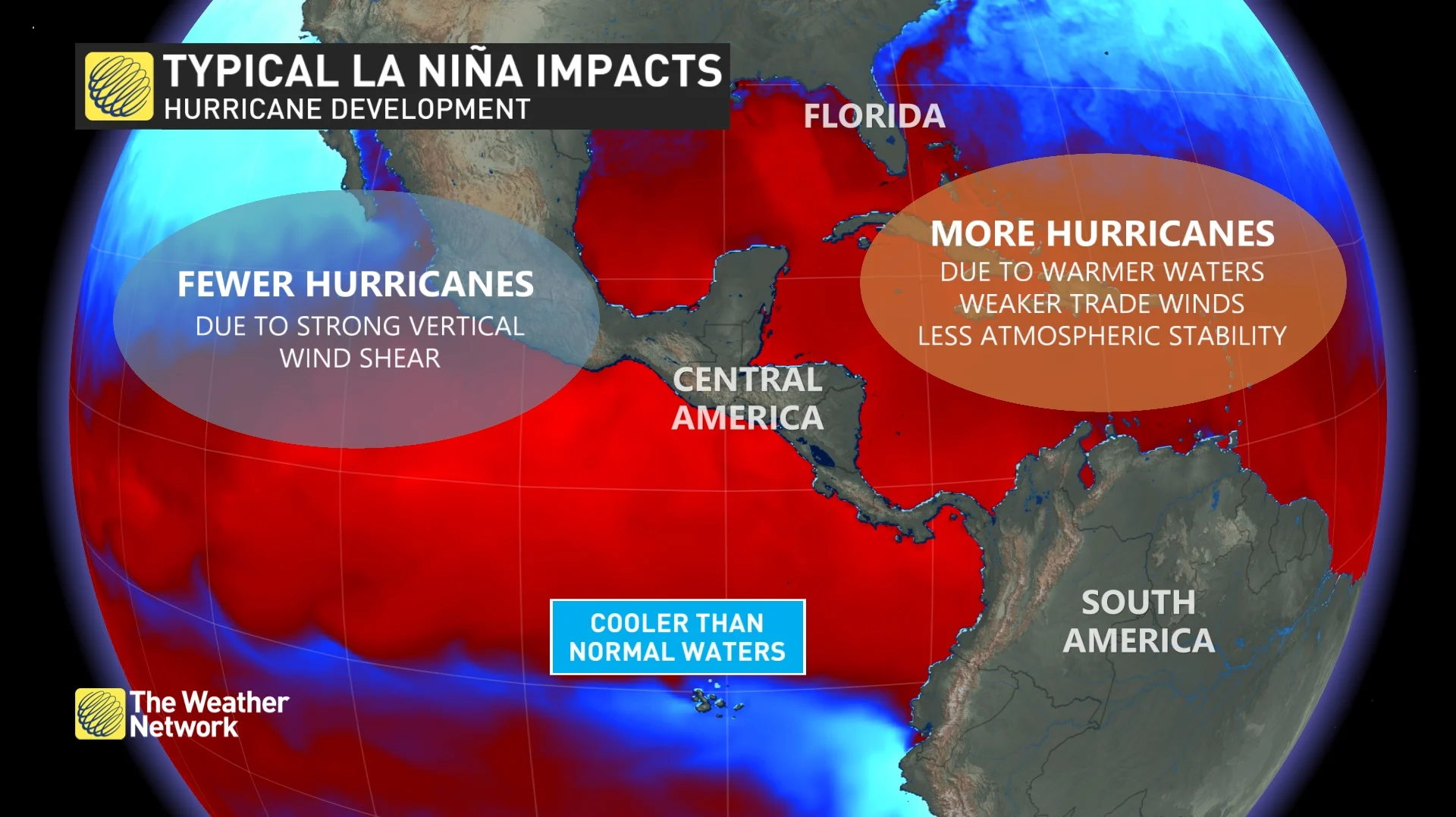
Bad news for some Canadians: La Niña defies odds to continue this summer
La Niña defies all odds by refusing to dissipate as expected, which may have major implications for Canada during the above-average hurricane season that is predicted.
The current La Niña pattern was expected to dissipate by this summer, but the global pattern is defying all odds. This may have major implications for Canada during the upcoming hurricane season that is forecast to be above-average.
Here are the reasons why.
In early April, experts indicated a weakening trend in the current La Niña, with a likelihood the globe would enter an El Niño-Southern Oscillation (ENSO) neutral state in the summer.
SEE ALSO: Experts call for another active Atlantic hurricane season in 2022
“Current weak La Niña conditions look fairly likely to transition to neutral ENSO by this summer/fall,” said state research scientists at Colorado State University.
However, La Niña isn't showing signs of slowing down as anticipated.
“The change in the consensus forecast is slightly favouring the continuation of La Niña...La Niña is favoured to continue through the Northern Hemisphere summer, with a 50-55 per cent chance through the fall,” notes NOAA’s Climate Prediction Center (CPC) in a public advisory.

DIFFERENCES BETWEEN ENSO-NEUTRAL AND LA NIÑA, IMPACTS TO CANADA?
The difference between a ENSO-neutral and La Niña state can be significant, especially for the Atlantic hurricane season. La Niña favours two key phenomena that trend to more hurricane activity than that of a neutral state.
The first is warmer Atlantic Ocean waters, which is hurricane fuel. The warmer the waters are the more a hurricane can develop, strengthen and overachieve with rainfall amounts. The second factor has to do with the Atlantic trade winds. Strong trade winds work against the vertical development of a hurricane.

However, La Niña tends to have weaker trade winds, so the counteractive measure is not present, allowing a hurricane to develop much easier than other global states.
The change from a neutral to a La Niña state risks more frequent and stronger hurricanes. This information supports hyperactive outlooks such as the one from Colorado State University, suggesting future updates could come up even higher.
In turn, this increases the likelihood that Canada may be impacted by these major storms more frequently than previously thought. It will be storm-track dependent however, but nevertheless, more and stronger storms provide more chances to roll the dice on seeing impacts to Canada this season.
Now that La Niña is favoured through the summer, forecasters are worried that the upcoming hurricane season may exceed its outlooks.
Subscribe to 'This Day in Weather History': Apple Podcasts | Amazon Alexa | Google Assistant | Spotify | Google Podcasts | iHeartRadio | Overcast
